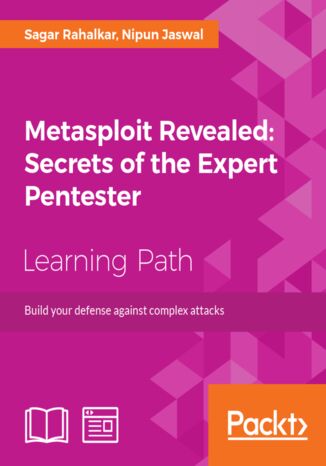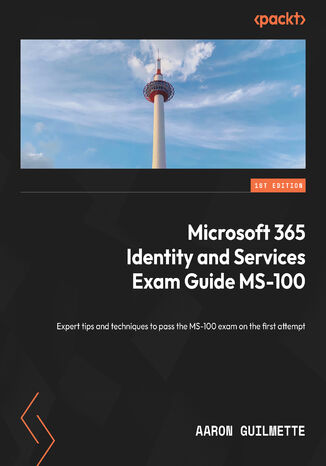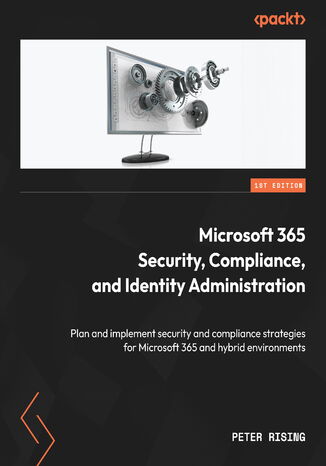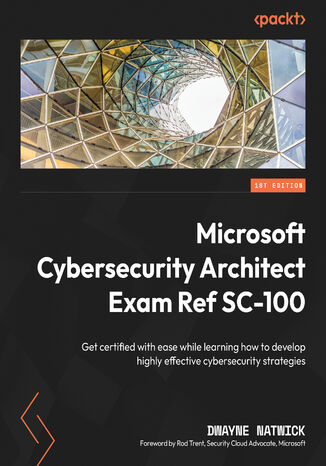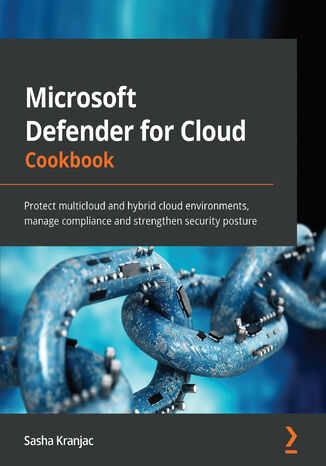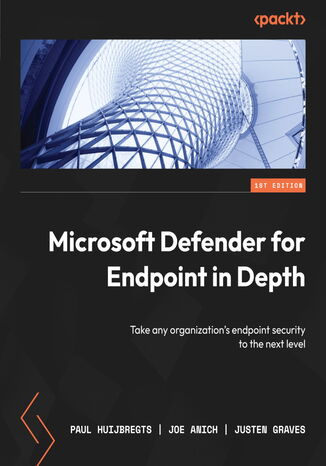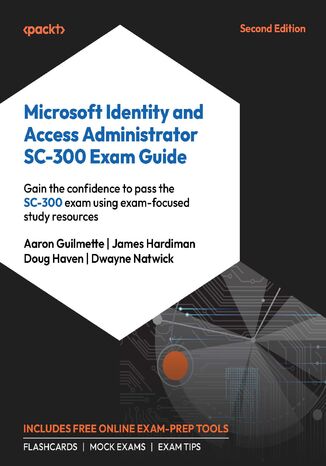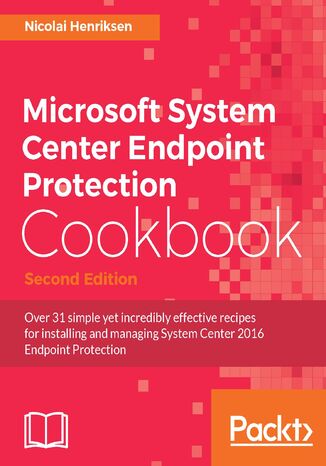Categories
Ebooks
-
Business and economy
- Bitcoin
- Businesswoman
- Coaching
- Controlling
- E-business
- Economy
- Finances
- Stocks and investments
- Personal competence
- Computer in the office
- Communication and negotiation
- Small company
- Marketing
- Motivation
- Multimedia trainings
- Real estate
- Persuasion and NLP
- Taxes
- Social policy
- Guides
- Presentations
- Leadership
- Public Relation
- Reports, analyses
- Secret
- Social Media
- Sales
- Start-up
- Your career
- Management
- Project management
- Human Resources
-
For children
-
For youth
-
Education
-
Encyclopedias, dictionaries
-
E-press
- Architektura i wnętrza
- Health and Safety
- Biznes i Ekonomia
- Home and garden
- E-business
- Ekonomia i finanse
- Esoterecism
- Finances
- Personal finance
- Business
- Photography
- Computer science
- HR & Payroll
- For women
- Computers, Excel
- Accounts
- Culture and literature
- Scientific and academic
- Environmental protection
- Opinion-forming
- Education
- Taxes
- Travelling
- Psychology
- Religion
- Agriculture
- Book and press market
- Transport and Spedition
- Healthand beauty
-
History
-
Computer science
- Office applications
- Data bases
- Bioinformatics
- IT business
- CAD/CAM
- Digital Lifestyle
- DTP
- Electronics
- Digital photography
- Computer graphics
- Games
- Hacking
- Hardware
- IT w ekonomii
- Scientific software package
- School textbooks
- Computer basics
- Programming
- Mobile programming
- Internet servers
- Computer networks
- Start-up
- Operational systems
- Artificial intelligence
- Technology for children
- Webmastering
-
Other
-
Foreign languages
-
Culture and art
-
School reading books
-
Literature
- Antology
- Ballade
- Biographies and autobiographies
- For adults
- Dramas
- Diaries, memoirs, letters
- Epic, epopee
- Essay
- Fantasy and science fiction
- Feuilletons
- Work of fiction
- Humour and satire
- Other
- Classical
- Crime fiction
- Non-fiction
- Fiction
- Mity i legendy
- Nobelists
- Novellas
- Moral
- Okultyzm i magia
- Short stories
- Memoirs
- Travelling
- Narrative poetry
- Poetry
- Politics
- Popular science
- Novel
- Historical novel
- Prose
- Adventure
- Journalism, publicism
- Reportage novels
- Romans i literatura obyczajowa
- Sensational
- Thriller, Horror
- Interviews and memoirs
-
Natural sciences
-
Social sciences
-
School textbooks
-
Popular science and academic
- Archeology
- Bibliotekoznawstwo
- Cinema studies
- Philology
- Polish philology
- Philosophy
- Finanse i bankowość
- Geography
- Economy
- Trade. World economy
- History and archeology
- History of art and architecture
- Cultural studies
- Linguistics
- Literary studies
- Logistics
- Maths
- Medicine
- Humanities
- Pedagogy
- Educational aids
- Popular science
- Other
- Psychology
- Sociology
- Theatre studies
- Theology
- Economic theories and teachings
- Transport i spedycja
- Physical education
- Zarządzanie i marketing
-
Guides
-
Game guides
-
Professional and specialist guides
-
Law
- Health and Safety
- History
- Road Code. Driving license
- Law studies
- Healthcare
- General. Compendium of knowledge
- Academic textbooks
- Other
- Construction and local law
- Civil law
- Financial law
- Economic law
- Economic and trade law
- Criminal law
- Criminal law. Criminal offenses. Criminology
- International law
- International law
- Health care law
- Educational law
- Tax law
- Labor and social security law
- Public, constitutional and administrative law
- Family and Guardianship Code
- agricultural law
- Social law, labour law
- European Union law
- Industry
- Agricultural and environmental
- Dictionaries and encyclopedia
- Public procurement
- Management
-
Tourist guides and travel
- Africa
- Albums
- Southern America
- North and Central America
- Australia, New Zealand, Oceania
- Austria
- Asia
- Balkans
- Middle East
- Bulgary
- China
- Croatia
- The Czech Republic
- Denmark
- Egipt
- Estonia
- Europe
- France
- Mountains
- Greece
- Spain
- Holand
- Iceland
- Lithuania
- Latvia
- Mapy, Plany miast, Atlasy
- Mini travel guides
- Germany
- Norway
- Active travelling
- Poland
- Portugal
- Other
- Przewodniki po hotelach i restauracjach
- Russia
- Romania
- Slovakia
- Slovenia
- Switzerland
- Sweden
- World
- Turkey
- Ukraine
- Hungary
- Great Britain
- Italy
-
Psychology
- Philosophy of life
- Kompetencje psychospołeczne
- Interpersonal communication
- Mindfulness
- General
- Persuasion and NLP
- Academic psychology
- Psychology of soul and mind
- Work psychology
- Relacje i związki
- Parenting and children psychology
- Problem solving
- Intellectual growth
- Secret
- Sexapeal
- Seduction
- Appearance and image
- Philosophy of life
-
Religion
-
Sport, fitness, diets
-
Technology and mechanics
Audiobooks
-
Business and economy
- Bitcoin
- Businesswoman
- Coaching
- Controlling
- E-business
- Economy
- Finances
- Stocks and investments
- Personal competence
- Communication and negotiation
- Small company
- Marketing
- Motivation
- Real estate
- Persuasion and NLP
- Taxes
- Social policy
- Guides
- Presentations
- Leadership
- Public Relation
- Secret
- Social Media
- Sales
- Start-up
- Your career
- Management
- Project management
- Human Resources
-
For children
-
For youth
-
Education
-
Encyclopedias, dictionaries
-
E-press
-
History
-
Computer science
-
Other
-
Foreign languages
-
Culture and art
-
School reading books
-
Literature
- Antology
- Ballade
- Biographies and autobiographies
- For adults
- Dramas
- Diaries, memoirs, letters
- Epic, epopee
- Essay
- Fantasy and science fiction
- Feuilletons
- Work of fiction
- Humour and satire
- Other
- Classical
- Crime fiction
- Non-fiction
- Fiction
- Mity i legendy
- Nobelists
- Novellas
- Moral
- Okultyzm i magia
- Short stories
- Memoirs
- Travelling
- Poetry
- Politics
- Popular science
- Novel
- Historical novel
- Prose
- Adventure
- Journalism, publicism
- Reportage novels
- Romans i literatura obyczajowa
- Sensational
- Thriller, Horror
- Interviews and memoirs
-
Natural sciences
-
Social sciences
-
Popular science and academic
-
Guides
-
Professional and specialist guides
-
Law
-
Tourist guides and travel
-
Psychology
- Philosophy of life
- Interpersonal communication
- Mindfulness
- General
- Persuasion and NLP
- Academic psychology
- Psychology of soul and mind
- Work psychology
- Relacje i związki
- Parenting and children psychology
- Problem solving
- Intellectual growth
- Secret
- Sexapeal
- Seduction
- Appearance and image
- Philosophy of life
-
Religion
-
Sport, fitness, diets
-
Technology and mechanics
Videocourses
-
Data bases
-
Big Data
-
Biznes, ekonomia i marketing
-
Cybersecurity
-
Data Science
-
DevOps
-
For children
-
Electronics
-
Graphics/Video/CAX
-
Games
-
Microsoft Office
-
Development tools
-
Programming
-
Personal growth
-
Computer networks
-
Operational systems
-
Software testing
-
Mobile devices
-
UX/UI
-
Web development
-
Management
Podcasts
Other
Metasploit Revealed: Secrets of the Expert Pentester. Build your defense against complex attacks
Metasploit is a popular penetration testing framework that has one of the largest exploit databases around. This book will show you exactly how to prepare yourself against the attacks you will face every day by simulating real-world possibilities.This learning path will begin by introducing you to Metasploit and its functionalities. You will learn how to set up and configure Metasploit on various platforms to create a virtual test environment. You will also get your hands on various tools and components and get hands-on experience with carrying out client-side attacks. In the next part of this learning path, you’ll develop the ability to perform testing on various services such as SCADA, databases, IoT, mobile, tablets, and many more services. After this training, we jump into real-world sophisticated scenarios where performing penetration tests are a challenge. With real-life case studies, we take you on a journey through client-side attacks using Metasploit and various scripts built on the Metasploit framework. The final instalment of your learning journey will be covered through a bootcamp approach. You will be able to bring together the learning together and speed up and integrate Metasploit with leading industry tools for penetration testing. You’ll finish by working on challenges based on user’s preparation and work towards solving the challenge. The course provides you with highly practical content explaining Metasploit from the following Packt books:1. Metasploit for Beginners 2. Mastering Metasploit, Second Edition3. Metasploit Bootcamp
This book serves as a comprehensive guide to prepare you for the Microsoft Identity and Services exam, which focuses on the core identity and security aspects of a Microsoft 365 tenant. The exam MS-100 tests your proficiency in Azure AD authentication types, user management roles, access management, and workload applications.This book follows the published MS-100 blueprint, which covers identity and identity synchronization concepts, administrative roles, and crucial security topics such as self-service password reset, Azure AD password protection, and multifactor authentication. You’ll gain insights into application and authentication concepts, including OAuth application request management, enterprise application configuration, the benefits of Azure AD Application Proxy, and deploying Microsoft 365 apps.The book also delves into passwordless sign-in methods and provides overviews of configuring Exchange Online, Microsoft Teams, SharePoint Online, and OneDrive for Business in both cloud-only and hybrid deployments. You’ll be able to assess your knowledge retention at the end of each chapter.By the end of this MS-100 study guide, you’ll have built the knowledge and skills to pass the MS-100 exam and be able to ensure thorough preparation with the help of practice exam questions.
The Microsoft 365 Security, Compliance, and Identity Administration is designed to help you manage, implement, and monitor security and compliance solutions for Microsoft 365 environments.With this book, you’ll first configure, administer identity and access within Microsoft 365. You’ll learn about hybrid identity, authentication methods, and conditional access policies with Microsoft Intune. Next, you’ll discover how RBAC and Azure AD Identity Protection can be used to detect risks and secure information in your organization. You’ll also explore concepts such as Microsoft Defender for endpoint and identity, along with threat intelligence. As you progress, you’ll uncover additional tools and techniques to configure and manage Microsoft 365, including Azure Information Protection, Data Loss Prevention (DLP), and Microsoft Defender for Cloud Apps.By the end of this book, you’ll be well-equipped to manage and implement security measures within your Microsoft 365 suite successfully.
Microsoft Cybersecurity Architect Exam Ref SC-100 is a comprehensive guide that will help cybersecurity professionals design and evaluate the cybersecurity architecture of Microsoft cloud services. Complete with hands-on tutorials, projects, and self-assessment questions, you’ll have everything you need to pass the SC-100 exam.This book will take you through designing a strategy for a cybersecurity architecture and evaluating the governance, risk, and compliance (GRC) of the architecture. This will include cloud-only and hybrid infrastructures, where you’ll learn how to protect using the principles of zero trust, along with evaluating security operations and the overall security posture. To make sure that you are able to take the SC-100 exam with confidence, the last chapter of this book will let you test your knowledge with a mock exam and practice questions.By the end of this book, you’ll have the knowledge you need to plan, design, and evaluate cybersecurity for Microsoft cloud and hybrid infrastructures, and pass the SC-100 exam with flying colors.
Microsoft Defender for Cloud is a multi-cloud and hybrid cloud security posture management solution that enables security administrators to build cyber defense for their Azure and non-Azure resources by providing both recommendations and security protection capabilities.This book will start with a foundational overview of Microsoft Defender for Cloud and its core capabilities. Then, the reader is taken on a journey from enabling the service, selecting the correct tier, and configuring the data collection, to working on remediation. Next, we will continue with hands-on guidance on how to implement several security features of Microsoft Defender for Cloud, finishing with monitoring and maintenance-related topics, gaining visibility in advanced threat protection in distributed infrastructure and preventing security failures through automation.By the end of this book, you will know how to get a view of your security posture and where to optimize security protection in your environment as well as the ins and outs of Microsoft Defender for Cloud.
Paul Huijbregts, Joe Anich, Justen Graves
With all organizational data and trade secrets being digitized, the threat of data compromise, unauthorized access, and cyberattacks has increased exponentially. Microsoft Defender for Endpoint (MDE) is a market-leading cross-platform endpoint security solution that enables you to prevent, detect, investigate, and respond to threats. MDE helps strengthen the security posture of your organization.This book starts with a history of the product and a primer on its various features. From prevention to attack surface reduction, detection, and response, you’ll learn about the features, their applicability, common misconceptions, and caveats. After planning, preparation, deployment, and configuration toward successful implementation, you’ll be taken through a day in the life of a security analyst working with the product. You’ll uncover common issues, techniques, and tools used for troubleshooting along with answers to some of the most common challenges cybersecurity professionals face. Finally, the book will wrap up with a reference guide with tips and tricks to maintain a strong cybersecurity posture.By the end of the book, you’ll have a deep understanding of Microsoft Defender for Endpoint and be well equipped to keep your organization safe from different forms of cyber threats.
Aaron Guilmette, James Hardiman, Doug Haven, Dwayne Natwick
SC-300 exam content has undergone significant changes, and this second edition aligns with the revised exam objectives. This updated edition gives you access to online exam prep resources such as chapter-wise practice questions, mock exams, interactive flashcards, and expert exam tips, providing you with all the tools you need for thorough exam preparation.You’ll get to grips with the creation, configuration, and management of Microsoft Entra identities, as well as understand the planning, implementation, and management of Microsoft Entra user authentication processes. You’ll learn to deploy and use new Global Secure Access features, design cloud application strategies, and manage application access and policies by using Microsoft Cloud App Security. You’ll also gain experience in configuring Privileged Identity Management for users and guests, working with the Permissions Creep Index, and mitigating associated risks.By the end of this book, you’ll have mastered the skills essential for securing Microsoft environments and be able to pass the SC-300 exam on your first attempt.
Microsoft System Center Endpoint Protection Cookbook. Click here to enter text. - Second Edition
System Center Configuration Manager is now used by over 70% of all the business in the world today and many have taken advantage engaging the System Center Endpoint Protection within that great product. Through this book, you will gain knowledge about System Center Endpoint Protection, and see how to work with it from System Center Configuration Manager from an objective perspective.We’ll show you several tips, tricks, and recipes to not only help you understand and resolve your daily challenges, but hopefully enhance the security level of your business.Different scenarios will be covered, such as planning and setting up Endpoint Protection, daily operations and maintenance tips, configuring Endpoint Protection for different servers and applications, as well as workstation computers. You’ll also see how to deal with malware and infected systems that are discovered. You’ll find out how perform OS deployment, Bitlocker, and Applocker, and discover what to do if there is an attack or outbreak.You’ll find out how to ensure good control and reporting, and great defense against threats and malware software. You’ll see the huge benefits when dealing with application deployments, and get to grips with OS deployments, software updates, and disk encryption such as Bitlocker. By the end, you will be fully aware of the benefits of the System Center 2016 Endpoint Protection anti-malware product, ready to ensure your business is watertight against any threat you could face.

